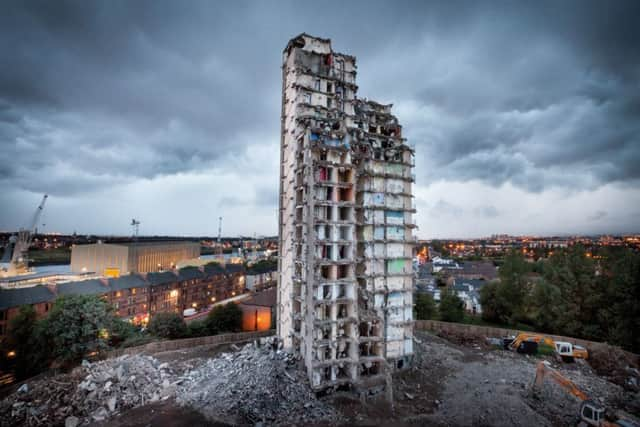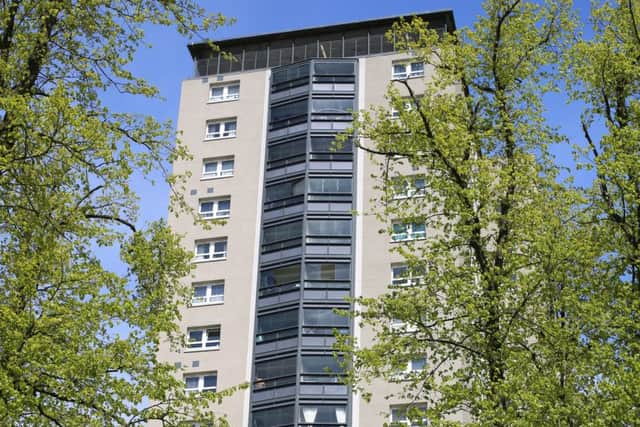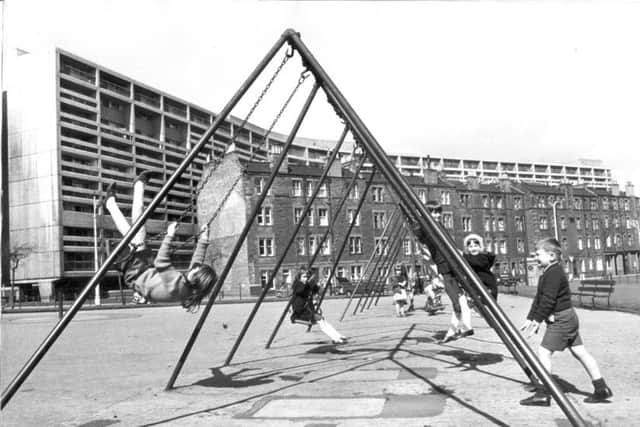Tower blocks reborn as Scotland learns to accept high rises


From small towns such as Kincardine to the Sighthill estate in Edinburgh, tower blocks loomed large on the horizon.
They were once hailed as the answer to Scotland’s housing crisis, but a combination of poor design, low maintenance budgets and resident apathy consigned many to the wrecker’s ball.
Advertisement
Hide AdAdvertisement
Hide AdGlasgow, home to more tower blocks than any UK city outside of London, has lost 30 per cent of its high rises in the last decade.


But now the tide appears to be turning. Housing associations and local authorities are increasingly choosing to refurbish and reclad the buildings instead of demolishing them.
Some are even being considered for listing in honour of their innovative architecture.
When Glasgow Housing Association (GHA) assumed control of the city’s social housing stock in 2003, multi-storey flats accounted for almost one-third of its estate.
Of those 201 towers, 73 were eventually cleared for investment as part of a 10-year programme of works.


Each refurbishment project included the provision of external insulation and overcladding of the exterior, building new roofs, as well a general improvement of shared areas such as stairwells and lifts.
The result is high rise living will continue for the next three decades at least.
Johnny Rodger, professor of urban literature at Glasgow School of Art, said there had been a gradual recognition of the benefits of multi-storey flats.
Advertisement
Hide AdAdvertisement
Hide Ad“The high rise was originally viewed as the answer to Scotland’s housing problem as you could build a number of houses very quickly - but there was also a belief in light and openness, a move away from the dark closes and courtyards of older tenement buildings,” he said.


“The nostalgia for the demolished tenements came much later. People were so glad to get away from frightful conditions and into new houses.
“If they had been managed properly, and money spent on their upkeep, more of these high rises could have survived.”
Kingsway Court, which occupies at prominent site in Scotstoun with views of the Clyde, is among those still standing.
Originally six towers, four were comprehensively refurbished this year while two were demolished to make way for a mixture of new homes at a cost of £27.4m.


Rodger, editor of Disappearing Glasgow, a photographic book which explores Glasgow’s lost high rises, says there is a sustainable future for the remaining buildings.
“More people are choosing to live on their own, and flats naturally appeal to them,” he said. “There are people that don’t want to have a garden.
“If you look at Singapore, the city is almost entirely made up of high-rise buildings, which have been a massive success.
Advertisement
Hide AdAdvertisement
Hide Ad“I don’t think we blame a particular style of building for causing problems. Looking around the world, we see high rises can work.”
In Edinburgh, which has demolished dozens of high rise buildings over the past 20 years, a similar process of reappraisal is under way.
Cables Wynd House in Leith, known locally as the banana flats due to its distinctive curved shape, could soon become a listed building.
Such a move would represent a sea-change from the days when it was more associated with anti-social behaviour than architectural merit.
“Scotland is renowned for its rich architectural heritage. While our palaces, abbeys and castles are a key part of this, they are only a fraction of our diverse historic environment which ranges from industrial buildings to the homes we live in,” said Dawn McDowell of Historic Environment Scotland.
“Cables Wynd House and Linksview House were innovative, ground-breaking designs at the time when they were built and offered a new vision for social housing and for those who lived in them.
“A key aim of listing is to recognise the special architectural importance of these buildings as well as celebrating and sharing their wider social and cultural role.”